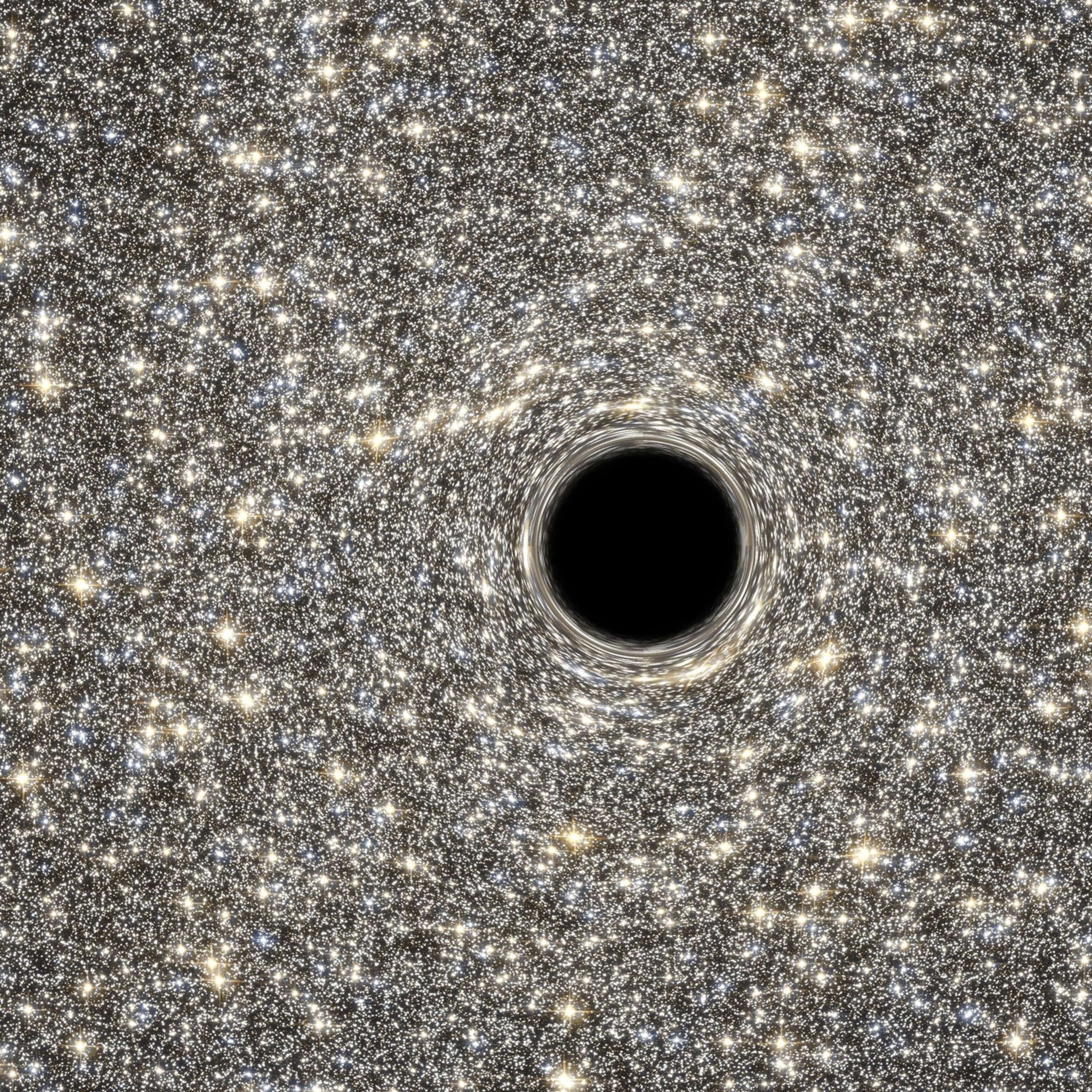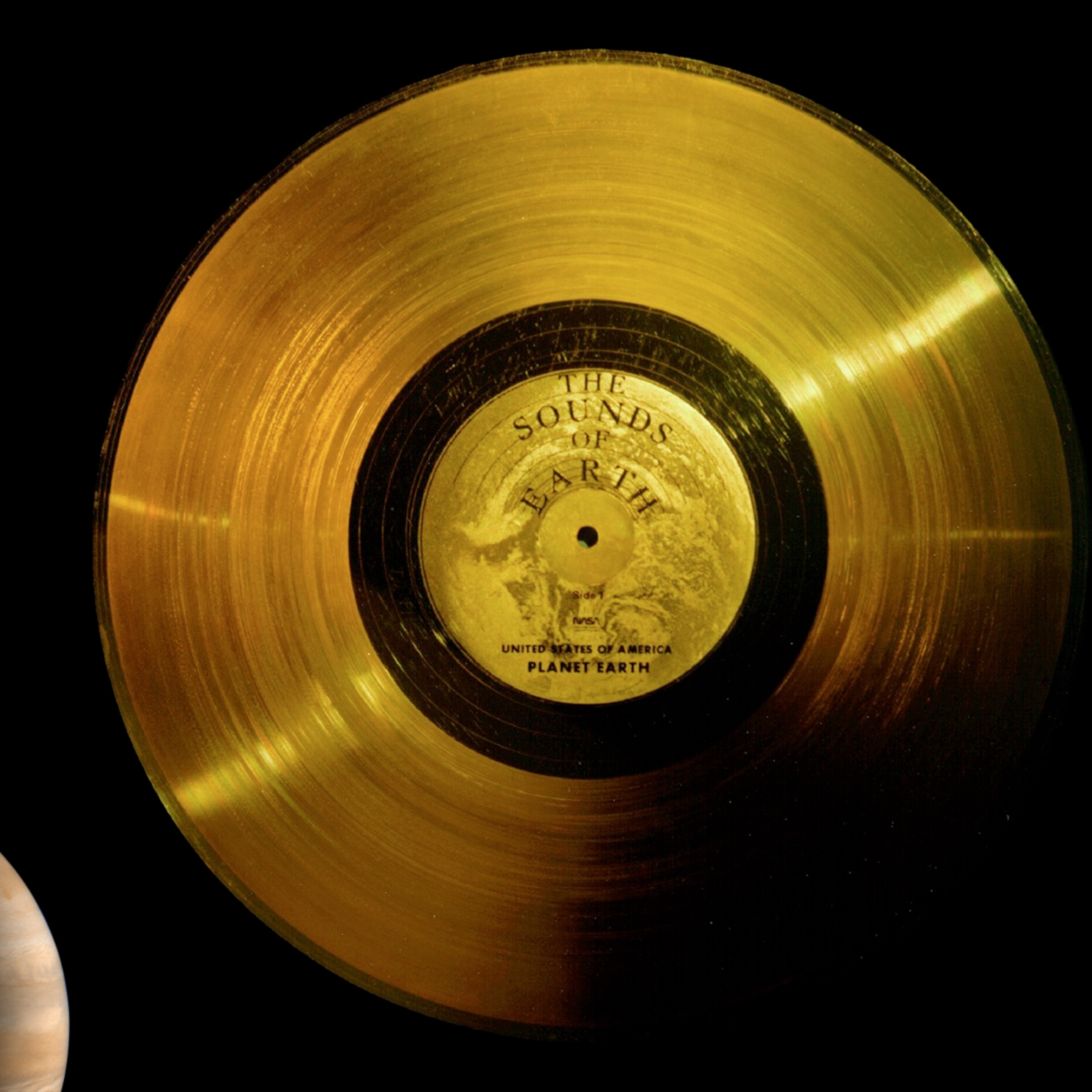
Mini Black Holes Zip Through Earth Every Day?
Black holes smaller than atoms pass unnoticed through planet, study suggests.
Like cosmic ghosts, miniature black holes may be zipping harmlessly through Earth on a daily basis, a new study suggests.
The new theory rebuts doomsday scenarios in which powerful atom-smashing machines such as the Large Hadron Collider spawn black holes that swallow the planet.
Instead, the study authors think that tiny black holes would behave very differently from their larger brethren in deep space, called astrophysical or stellar-mass black holes.
Despite having roughly the mass of a thousand sedans, a mini black hole would be smaller than an atom. At that size the black hole wouldn't swallow much matter and would instead mostly trap atoms and some larger molecules into circling orbits—in much the same way that protons in atoms capture and bind electrons.
The study authors therefore call mini black holes with orbiting material Gravitational Equivalents of an Atom, or GEAs.
"GEAs would not cause any damage to you," said study co-author Aaron VanDevender, a researcher at biotechnology firm Halcyon Molecular in Redwood City, California. "An atom bound to the GEA might get stripped off and collide into you, but you wouldn't notice. It's a very small amount of energy."
Universe Seeded With Mini Black Holes
Stellar-mass black holes are thought to form when giant, dying stars collapse, leaving corpses that are so dense not even light can escape their gravitational pull.
Scientists think multiple stellar-mass black holes can merge to form supermassive black holes, which are found in the hearts of large galaxies, including our own Milky Way.
While we can't see a black hole itself, scientists can see the light from superheated material spiraling into the black hole, creating what's known as an accretion disk.
Meanwhile, theory predicts that an abundance of tiny black holes were created shortly after the beginning of the universe, as very dense matter was expanding and cooling. (Related: "Immaculate Black Holes Found Near Universe's Conception.")
This primordial matter was not evenly distributed throughout the early cosmos, so some regions of space were denser than others, VanDevender said.
"Because of random variations in the density [of matter], some of those chunks happened to form black holes in the beginning," he said.
According to physicist Stephen Hawking, smaller black holes should actually lose mass in the form of radiation and should ultimately evaporate.
But this so-called Hawking radiation has never been observed, so the new study assumes that tiny primordial black holes continue to exist throughout the universe.
Based on their calculations, VanDevender and his father, J. Pace VanDevender of Sandia National Laboratories in Albuquerque, New Mexico, estimate that one or two of these mini black holes passes through Earth every day.
Mini Black Holes Too Small to Devour Much
According to the new study, published online this month on arXiv.org, the main behavioral difference between small and large black holes is what happens at the so-called event horizon, the closest an object can get to a black hole before it becomes impossible to escape.
The larger and more massive a black hole is, the wider its event horizon.
"We think of gravity as always being an attractive force, and in the case of very large black holes, that attraction is so great that it's going to pull everything into it," Aaron VanDevender said. "But in those cases, you're pulling it into a very large event horizon. You have a very large space to absorb things into."
(Related: "Huge Black Hole Found in Dwarf Galaxy.")
By contrast, the event horizon for a mini black hole is smaller even than the diameter of an atom. This means that a mini black hole can zip through an entire planet and still have very little chance of veering close enough to an atom for it to pass the event horizon.
When a mini black hole does attract a particle, it will most likely circle the black hole far from the event horizon and not be absorbed, the theory states.
"In the GEA case, atoms don't fall into the event horizon for the same reason that electrons don't fall into a nucleus," VanDevender explained.
According to quantum mechanics, electrons don't have well-defined orbits around atoms, as the planets do around the sun. Instead the particles exist in a kind of cloud of possibilities around the nucleus. The most stable—and thus the most likely—orbit for an electron is not too close and not too far from a nucleus.
Similarly, "although a mini black hole attracts atoms using gravity ... the effect that prevents the mini black hole from absorbing its bound atoms is quantum mechanical."
Very rarely, an atom or molecule will get close enough to a mini black hole to be devoured. But the VanDevenders calculate that it would take much longer than the age of the universe for a mini black hole to swallow all the atoms in the Earth.
(Related: "Einstein Theories Confirmed by NASA Gravity Probe.")
Atoms Unstable Around Tiny Black Holes?
Massimo Ricotti, an astronomer at the University of Maryland, agrees that it would be very improbable for a mini black hole to gravitationally capture an atom.
"It's very hard to accrete on tiny black holes, because they're so small," said Ricotti, who was not involved in the study. "Even if they're moving through a solid body, most of the time they find themselves almost in a vacuum, given their small size."
(Related: "Proton Smaller Than Thought—May Rewrite Laws of Physics.")
Ricotti is skeptical, however, about whether atoms that do get captured can form stable orbits around a mini black hole, creating a GEA.
One reason is that the orbiting atoms would likely be superheated due to the intense gravity and would develop electrical charges. The charged particles would emit electromagnetic radiation, draining energy from the particles and ultimately causing them to spiral into the black hole.
"Certainly GEAs would be interesting objects if they exist," Ricotti added.
But "I would like to better understand some issues related to the stability of the GEA and the mechanisms by which [an atom] gets accreted in the first place."








